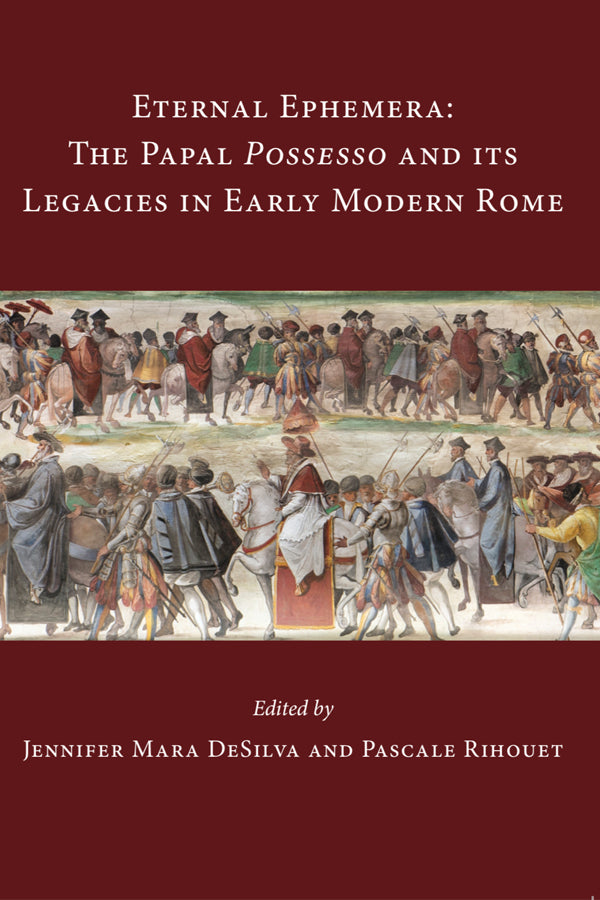Eternal Ephemera: The Papal Possesso and Its Legacies in Early Modern Rome
Edited by Jennifer Mara DeSilva & Pascale Rihouet - ES45
Overview
Eternal Ephemera is the first book dedicated to the visual culture and history of the possesso. This post-election procession led the pope from the Vatican to the Lateran, where he took solemn possession of his diocese as bishop of Rome.
In this collection, six essays symbiotically expose the long-lasting ramifications of possessi in sixteenth- and seventeenth-century Rome. This triumphant parade affected architecture and urbanism, triggered new art forms (prints of the cavalcade or arches and chiaroscuro painting), and connected ephemera with the popular demand for moral economy. This volume innovatively shows the artistic and architectural legacy of the ephemeral in the Eternal City.
Jennifer Mara DeSilva is Associate Professor of History at Ball State University and the editor of The Borgia Family: Rumor and Representation (Routledge, 2019).
Pascale Rihouet is Senior Lecturer of Art History at the Rhode Island School of Design and the author of Art Moves. The Material Culture of Processions in Renaissance Perugia (Brepols, 2019).
ISBN: 978-0-7727-2520-2 softcover
Published: 2020
Contents
INTRODUCTION
Pascale Rihouet, "Defining the Possesso and its Legacies"
ARCHITECTURE AND URBANISM
1. Jasmine R. Cloud, "Echoes of the Emperors: The Possesso’s Ephemera and the Roman Forum (1536-1656)"
2. Antonella De Michelis, "Possesso as Master Plan? Reading the Processional Route as Paul III’s Urban Manifesto"
NEW ART FORMS
3. Patricia L. Reilly, "Triumphal Chiaroscuro Painting during the Reign of Julius II"
4. Pascale Rihouet, "Giovanni Guerra’s Order of the Cavalcade (1589) and the Birth of Possesso: Prints in Sixtus V’s Rome"
EPHEMERA AND THE MORAL ECONOMY
5. Jennifer Mara DeSilva, "Episcopal Charity and Princely Liberality: Leo X’s Household and his Possesso (1513)"
6. John Hunt, "The Possesso and the Moral Economy of Baroque Rome, 1590–1655"
Reviews
Couldn't load pickup availability


